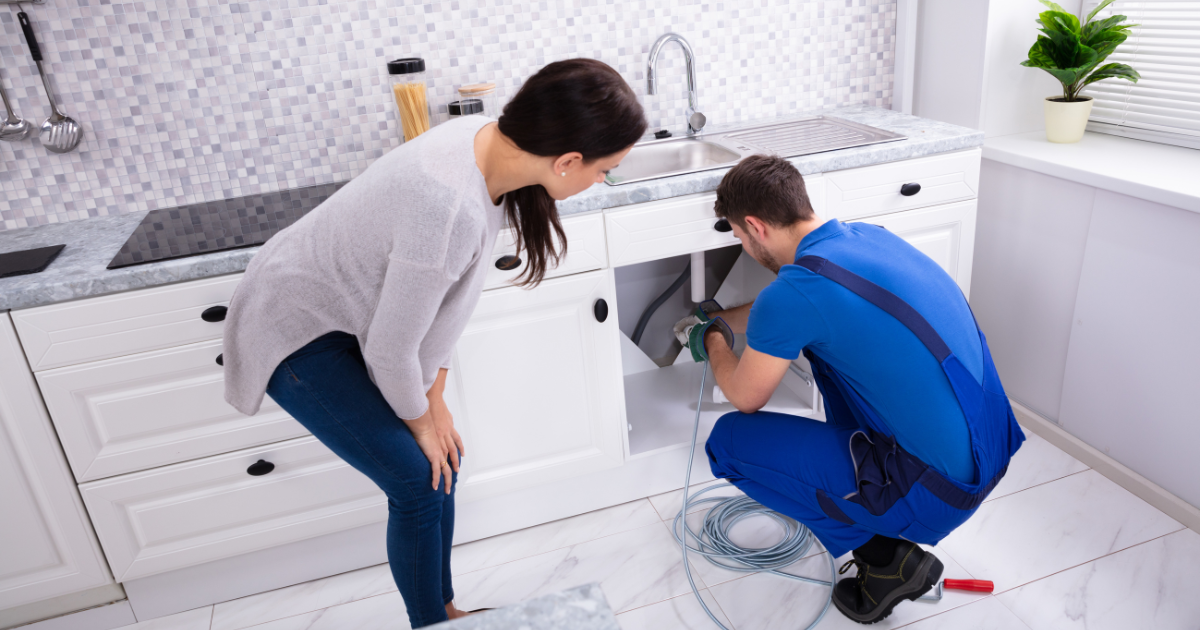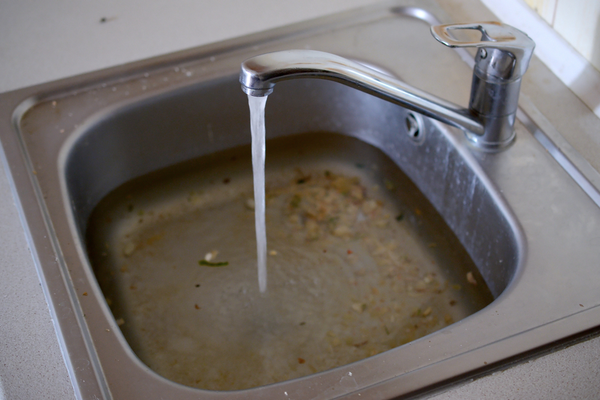Techniques for Dealing with a Blocked Drain Prior to Reaching out to Plumbing Experts
Techniques for Dealing with a Blocked Drain Prior to Reaching out to Plumbing Experts
Blog Article
Right here in the next paragraphs you will find a lot of reliable insights regarding Some easy tips to fix blocked drains.

Intro
Taking care of an obstructed drainpipe can be a discouraging experience, interrupting day-to-day activities and possibly creating damages to your building. Nevertheless, before connecting to pipes experts, there are steps you can require to address the concern on your own. In this overview, we'll explore DIY services and safety nets to take on an obstructed drain effectively.
Determining the Concern
The very first step in attending to a blocked drain is identifying the indicators. Slow water drainage, gurgling sounds, foul odors originating from drains, or water backing up prevail indications of a blocked drainpipe. Identifying these signs early can assist prevent better complications.
Typical Root Causes Of Blocked Drainpipes
Comprehending the factors that add to drain obstructions is crucial for reliable resolution. Usual wrongdoers include hair, soap scum, grease, food debris, and foreign things like sanitary items or paper towels. Tree roots invading underground pipelines can additionally create considerable obstructions.
Do it yourself Solutions
For small obstructions, numerous do it yourself remedies can be effective. Putting boiling thin down the drain can help liquify grease and debris. Baking soda and vinegar or a blend of salt and cooking soda can act as all-natural cleaners. Utilizing a plunger or pipes snake to dislodge blockages is another option.
Devices and Equipment
Having the right devices accessible can make DIY drainpipe cleaning up extra efficient. A plunger is a flexible device for clearing blockages in sinks, toilets, and showers. A plumbing snake or auger can reach much deeper blockages, while drainpipe cleansing chemicals can be utilized cautiously for persistent obstructions.
Preventive Measures
To stay clear of future obstructions, embracing safety nets is important. Mount drain guards or strainers to capture hair and particles before they go into the pipes. On a regular basis flush drains with warm water to dissolve oil buildup, and prevent dealing with oil or solid waste down the tubes.
When to Call a Professional
While do it yourself services can resolve small obstructions, specific indications suggest the need for professional support. Consistent clogs, foul odors regardless of cleansing initiatives, or multiple drains pipes supporting concurrently are red flags that require professional intervention.
Selecting the Right Pipes Solution
When picking a pipes service, take into consideration elements such as experience, licensing, and consumer evaluations. Select a respectable plumbing technician with a record of high quality workmanship and clear prices practices.
Expense Considerations
The cost of expert drain cleaning services can vary relying on the extent of the obstruction and the plumbing professional's prices. Demand quotes from multiple suppliers and inquire about any type of additional charges to make certain openness and prevent surprises.
Safety Measures
When attempting DIY drainpipe cleansing, focus on security. Wear safety gloves and eyeglasses to avoid contact with harmful chemicals or germs. Never ever mix various drain cleaning products, as this can create harmful fumes.
Case Researches
Real-life examples illustrate the efficiency of DIY remedies and the value of timely specialist treatment in dealing with drainpipe obstructions.
Conclusion
By adhering to the suggestions described in this guide, you can successfully tackle blocked drains pipes and stop future plumbing issues. Whether choosing do it yourself options or looking for specialist assistance, punctual activity is essential to preserving a healthy and balanced plumbing system and maintaining the stability of your home.
How to Clear a Clogged Drain Yourself (And When to Call In the Professionals)
What Can Clog a Drain
Dirt Skin flakes Hair Grease Soap scum Food Offset pipes Tree roots Small objects Mineral buildup DIY Tricks to Unclog a Drain
You can fix this! Once you have identified the source of the clog (or have a vague idea), you can try one or a combination of these fixes in order to clear your plumbing.
Wire Hanger or Snake
Untangle and clear out hair from a drainpipe with a homemade snake. Use a straightened-out wire hanger with a 90-degree angle hook to locate the clog and drag out any unwanted material.
Remember not to push the clog further down to where the wire hanger cannot reach! If you need to follow up with a plunger, give it a try. Your efforts might be more successful after it’s been wire-snaked.
If you want to get fancy and don’t have a wire hanger to spare, head to the store and pick up a hand-operated drain snake. You can get one for $10-$30. It may save you the hassle, and provide additional length to reach deep into the clogged pipe.
Plunger
A cup plunger has a suction cup attached to a wooden handle. The rubber creates a seal around the drain, and increases the pressure force of the plunger.
Plunge for 30-second increments to loosen the clog. This may need to be repeated over the course of 15-20 minutes. Once plunged, run the water to flush the remaining material out of the drain.
Remember– never use a plunger if you have used a chemical drain cleaner. These chemicals can splash up from the force of the plunger and cause serious injury or burns.
Boiling Water
Hot water can sometimes break up materials into a flushable amount. Dirt, grease, and soap buildup requires heat in order to unstick from surfaces.
Take your kitchen kettle and heat your water to a boil. Once it reaches a rolling boil, pour it directly down the drain into the blockage. Carefully follow with plunging, if necessary.
Don’t worry if this takes more than one try! It can often take multiple kettles and repeated plunging in order to clear a particularly stubborn clog.
Chemical Drain Cleaner
As a last resort, pick up a bottle of chemical drain cleaner. Drain-cleaning chemicals are potent, and not very good for the environment.
You may need to wear protective eyewear in gloves before handling your bottle of chemical drain cleaner. Follow the instructions printed on the bottle, and flush with water as soon as the instructions allow. Do not follow with plunging.
Baking Soda and Vinegar
As a safer alternative to chemical drain cleaner, baking soda and vinegar can create a chemical reaction that clears tough clogs.
Combine one cup of cleaning vinegar with one cup of boiling water, and set aside. Once you have done this, pour half a cup of baking soda down the drain. Give the baking thirty seconds to settle and cover a large portion of the problem drain.
Following the baking soda, pour down your vinegar and hot water solution. Once the vinegar and baking soda combine, the mixture will bubble and fix. Let this reaction fizzle in the drain for about an hour.
After an hour, follow with a kettle’s worth of hot water. The heat and liquid should flush out any remaining material.
When to Call a Plumber
If your DIY attempts haven’t cleared your clog drain, it’s time to call in a professional. It’s not worth losing access to your kitchen sink or high-traffic bathroom. A clog in a vital area can keep you from the things you’d rather be doing, and derail your routine.
Anytime a clog is causing water to spread is a time to call in a plumbing service. What starts out as a little bit of water can quickly grow into serious, expensive water damage.
Additionally, a serious clog can result in burst pipes or serious leaks. Make sure you know when to take it seriously!
https://myguysnow.com/how-to-clear-a-clogged-drain-yourself-and-when-to-call-in-the-professionals/

I recently found that blog posting on 8 Tips For Clearing A Blocked Drain when doing a lookup on the internet. Don't hesitate to pause to distribute this blog post if you appreciated it. Thanks for your time. Revisit us soon.
Call Today Report this page